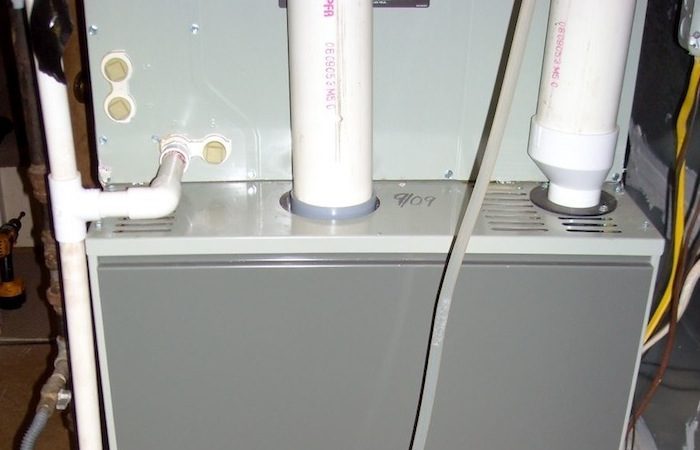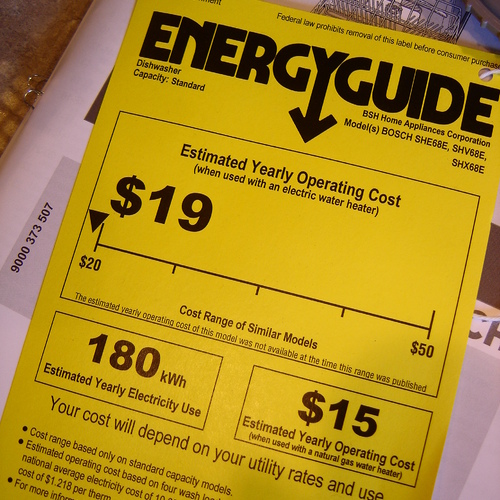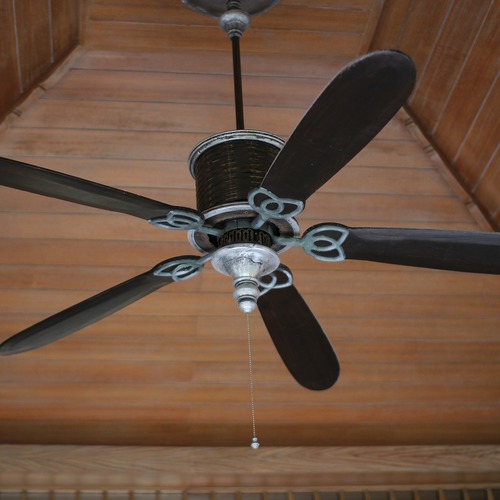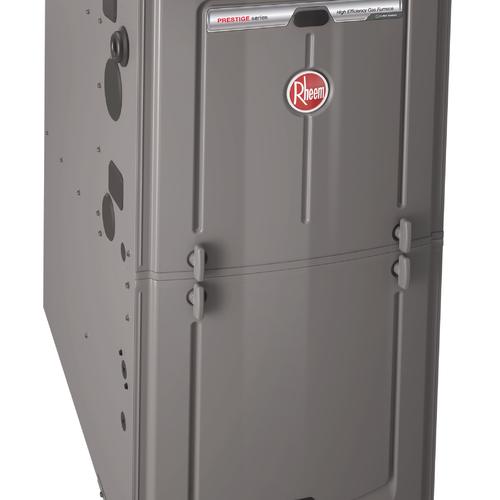
Image Credit: Energy Vanguard
Do you know when the U.S. last raised furnace efficiency standards? It was 1987. Do you know how long the U.S. Department of Energy (DOE) has been trying to change that? At least since 2007.
The past eight years have been a sad case of industry heavyweights preventing progress on this important issue. The DOE, however, just proposed a new rule, so we might finally see some action here. Do you know when it’s set to go into effect, if passed?
A bit of furnace efficiency history
In 1987, the National Appliance Energy Conservation Act set a minimum of 78% Annual Fuel Utilization Efficiency (AFUE). That’s when furnaces with standing pilot lights went away.
In 2007, the DOE proposed raising the minimum from 78 to 80 AFUE. What?! Yes, it’s true. They really did that, even though the rule would have had pretty much zero effect on saving energy.
Why? Because even though 78 AFUE was the minimum allowed, nearly every furnace being made is 80 AFUE or higher. I think I’ve seen only one new furnace that had an AFUE lower than 80.
So the battle began. The state of California and a coalition of environmental and energy efficiency groups sued the DOE. That led to a set of regional standards, whereby Northern states (those with more than 5,000 heating degree days) would have had to go to 90 AFUE and the warmer South and Southwest would get to stick with 80 AFUE.
And that’s when the American Public Gas Association (APGA) blew up. According to the American Council for an Energy Efficient Economy (ACEEE), the APGA “argued that consumers would flock to electric resistance furnaces rather than install high-efficiency gas furnaces.” (See their article, Why DOE’s Cave on Furnace Standards Is Such a Big Deal.)
There’s no way they really thought that would happen, of course. Heat pumps maybe, but electric resistance furnaces? No way. They’re not allowed for primary heating even here in Georgia, a warm state (IECC climate zones 2, 3, and 4). The truth is that the gas industry really should be afraid of heat pumps, not electric resistance heat.
So the effort to enact regional standards fell apart.
The latest move by the DOE
On February 10, 2015, the DOE announced a proposal to adopt a 92 AFUE standard nationwide. That’s nice. It should be higher and it should have been done a long time ago, but if enacted, it would effectively kill atmospheric combustion furnaces.
There will be opposition. According to The ACHR News, Stephen Yurek, president and CEO of the Air Conditioning, Heating, and Refrigeration Institute (AHRI), said, “Now, even though natural gas and oil prices are lower than they were [three years ago when the DOE issued regional standards] — in the case of oil, much lower — the DOE now feels a 92 percent nationwide standard is appropriate. How can that be? What’s changed?”
And the Air Conditioning Contractors of America seems to be getting itself ready for opposition. “It’s very aggressive,” said senior vice president Charlie McCrudden in the same ACHR News article. “This would harm a lot of people, including those in lower income brackets.”
So, as homes are required to reach greater levels of airtightness, the furnace efficiency circus continues.
Oh, another thing: Do you know when the new requirement would go into effect, if approved? 2021. At the earliest.
Pros and cons
Changing the minimum efficiency of equipment available isn’t a big deal for new homes. Yeah, the cost is a little higher, but it’s existing homes that will feel the biggest blow if the DOE proposal gets approved.
DOE efficiency standards for equipment, however, cannot distinguish between new homes and existing homes. The DOE’s efficiency standards apply to equipment, not uses of equipment. So if the DOE approves this proposal, anyone changing out an atmospheric combustion furnace afterward will also have to change out the flue. That could add several hundred dollars to the cost. It may increase it even more, and in multifamily buildings, the difficulty level will be higher.
The obvious benefit of going to a higher efficiency furnace is the energy savings. Going from 80 AFUE to 92 or, better, 95 AFUE will reduce the amount of natural gas or propane being used and save money for the homeowners. Unfortunately, the price of gas is really low in a lot of places now, so return on investment may not be favorable.
The biggest reason to make the change, in my opinion, isn’t energy savings though. It’s indoor air quality. Condensing, sealed combustion furnaces that bring in their own combustion air won’t backdraft a natural draft water heater (which is still allowed in homes). It won’t depressurize a home and suck in bad air from the garage or moldy crawl space. And it won’t ever spill exhaust gases into a home when common-vented with a natural draft water heater because it cannot be common-vented.
It’s past time to make this change. Let’s go, DOE. Make it happen.
External Resources
DOE – Rulemaking for Residential Furnaces Energy Conservation Standards
DOE page on residential furnaces
ACEEE – Why DOE’s Cave on Furnace Standards Is Such a Big Deal
Appliance Standards Awareness Project page on furnaces
Allison Bailes of Decatur, Georgia, is a speaker, writer, energy consultant, RESNET-certified trainer, and the author of the Energy Vanguard Blog. Check out his in-depth course, Mastering Building Science at Heatspring Learning Institute, and follow him on Twitter at @EnergyVanguard.
Weekly Newsletter
Get building science and energy efficiency advice, plus special offers, in your inbox.















4 Comments
Orphan water heaters
What about the problem of the orphaned water heater when someone switches to a direct vent NG furnace? Now with only one appliance venting into a flue that used to vent two, these flues are almost always oversized, which causes the water heater's flue gasses to spill into the space where the heater is located. In addition, high-efficiency furnaces are way more complicated and repair parts are more manufacturer specific, so they're harder to find when the furnace breaks. And what's the payback for a new furnace with a 10% efficiency boost. My guess is decades. I'm not convinced that we should require folks to install 90+ furnaces. Of course they should have that option, but a requirement--I don't think so.
get rid of that orphan too... (for Patrick McCombe)
Atmospheric drafted combustion appliances are more trouble than it's worth, especially now that new houses have to test a sub-3ACH/50 to meet IRC 2012 code, the back drafting potential becomes huge. Just get rid of them all- insist that combustion equipment (whether water heaters or space heating equipment) all be direct vented/sealed combustion going forward as a matter of public health.
Venting an atmospheric-drafted water heater into a flue shared by a higher-BTU/hr furnace or boiler was always a pretty sketchy hack in the first place. Space heating loads in IRC 2012 code-min houses are now comparable to or lower than the burner output of a hot water heater, if they were right-sizing the space heating equipment to the actual loads the flues would all need narrower liners anyway.
Whether the DOE minimum AFUE is 80%, 90%, or 92%, requiring that the equipment never be more than 1.7x oversized for the load (the presumptive oversizing factor in the AFUE test) or less than 1.25x (to be able to utilize overnight setback strategies) would be the right thing for both comfort & cost. Equipment sizing is not within the DOE's regulatory domain, but very few states put a limit on oversizing factors, and the result is rampant 3-5x oversizing "...just in case..." there is a cold snap that takes the outdoor temps down to -150F or -225F or something.
The "payback" on right-sized sealed combustion equipment is immediate, in the form of lower noise, stabler room temps, less wind-chill,. less backdrafting potential etc. If it happens to be condensing equipment, great. Payback on the cost difference on fuel savings alone may take decades at 50 cents/therm residential retail rates in warmer climates, but the notion that we are pre-destined to have prices this low is a dubious assertion at best, subscribed to primarily by those drinking the frack-water.
About 25% of all natural gas production in the US is by-product from light-tight oil shale fracking, and at current wholesale oil prices the drilling rate for new production has slipped off a cliff, since it's uneconomic. A fracked oil well is pretty much depleted within 3 years of it's initial production, on average- it's only a matter of time before the production slips over the same precipice. At the same time utility companies are falling all over themselves installing combined cycle gas generating capacity to replace retiring coal plants, since the thermal efficiency is about 2x that of the sub-critical thermal coal they are replacing, and they have much better ramp rates, allowing them to do most of the load tracking at much higher efficiency than gas peaker plants. The upshot is increasing net gas use, and a structural setup for declining gas production. Fracked dry gas wells that do not have significant liquids (either light oil, or propane & butane) are not profitable at anywhere NEAR the current wholesale prices for natural gas. To keep gas production up to recent levels will demand a price 3-5x higher than the recent 3-year running average, barring some magic new technology for extracting it.
Bottom line, gas prices are at historical lows, but can't remain there- they will (as has been true for decades) be volatile. Predicting the fuel cost savings "payback" of 92% efficiency vs. 80% efficiency within a 15-25 year lifecycle for the equipment isn't really possible, and basing it on recent years' gas pricing would be silly, at best.
Furnace fan electrical usage
Modern furnaces with DC fan motors use far less electricity than fans of old. This should be part of the furnace efficiency discussion and payback. Natural gas costs may be static but electrical rates continue upward. Lower overall electrical usage due to efficient lighting and other improvements will insure future rate increases.
Absolutely the efficiency
Absolutely the efficiency standards should be increased.
BE careful however on throwing in 90 percent and 96 percent like it is all the same thing. 96 percent is much more complex. For instance the sheet metal must be thinner on combustion chambers, as stainless steel is a poor conductor and the difference in a .01 thinner steel makes a difference, but can harm lifespan.
I have a pair of condensing furnaces at work, installed in the 90's for their lack of vertical chimney ore than fuel savings, that run along with no problem day in and day out
Log in or create an account to post a comment.
Sign up Log in